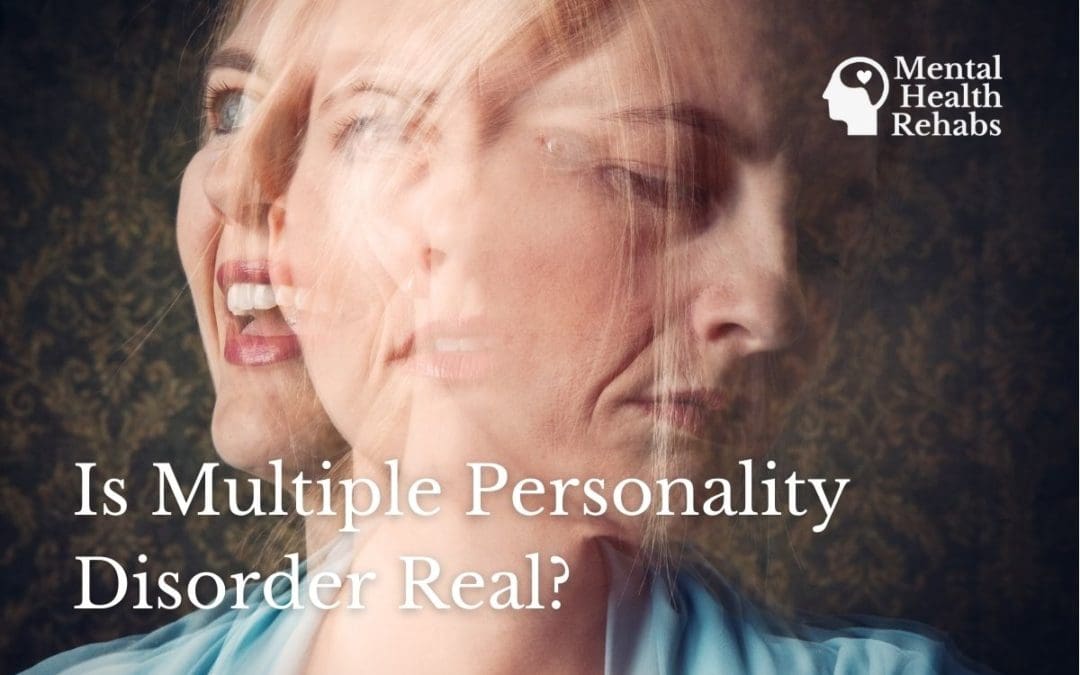Dissociative identity disorder (DID), previously known as multiple personality disorder or split personality disorder as it’s sometimes called, is a real mental illness. It is one that is shrouded with misconceptions, stigmas, and controversy; a condition believed to be extremely rare, bizarre–or even fake. The often erroneous representation of this condition in tv and movies–which portrays these individuals in outlandish ways, such as being extremely violent or unpredictable–hasn’t helped. In this article, we’ll dispel facts from falsehood about this legitimate mental disorder and learn more about what multiple personality disorder really is.
What is Multiple Personality Disorder?
Multiple personality disorder is the outdated term for the condition know known as disassociative identity disorder (DID). With DID, a person has two or more separate identities or personalities known as alters. These personalities are not merely alter egos that a person slips into and out of on a whim. They are robust with personal history, likes and dislikes, quirks, and everything else that one thinks of that lends to a person’s concept of identity. Alters tend to be very different from one another as well as the core personality which can in include different genders or ethnic backgrounds.
When these personalities take hold, they take over the person’s “core” identity to fully control that person’s behavior. In addition to behavioral changes, identity disturbances can include changed cognition, consciousness, and motor function. When the person with DID returns to their core self, it’s not uncommon for them to have significant gaps in their memory (when the “alter” personality was in control) which can be debilitating to carrying out daily life. In addition to causing issues in their day-to-day life, these lapses can also cause clinically significant distress which can increase the risk of other health conditions.
Who Does It Affect?
As its name suggests, DID is a dissociative disorder meaning it’s a disorder that affects a person’s ability to grasp reality. It is an extremely rare mental illness that affects fewer than 1% of the population, but women more often than men. Most research has found that the vast majority of these individuals were victims of child abuse or other highly traumatic events. It is believed that disorder is the brain’s coping mechanism for distancing itself from the trauma.
The History of Dissociative Identity Disorder (Plus: Real Cases of Multiple Personality Disorder)
Before there was an understanding of mental illness, disassociative disorder was often mistaken as demonic possession (and later, as hysteria when the idea of possession fell out of favor). At the time, this was the only reason that could account for the drastic changes and disturbances in identity, memory, and bodily function–amongst other startling symptoms.
This was the case of Jeanne Fery, the earliest documented case of multiple personality disorder which took place in 1584. Her account has been dubbed to be one of the most perfect cases of this disorder displaying all the characteristic symptoms associated with this illness today. How do we know this about a case from centuries ago? Jeanne Fery provided exceptionally detailed records of Jeanne’s symptoms, recorded by the subject herself who detailed the exorcism that was performed on her in a journal.
It took a few more hundred years before these symptoms were recognized as being a mental health condition, rather than an effect of the supernatural. However, it was not recognized as DID we know today. Up until 1882, multiple personality disorder was dubbed “dédoublement de la personnalité” or “double personality” and was believed to have a limit of one alter. It wasn’t until 1882 when Louis Uguste Vivet became the first person to be diagnosed as having more than two alters (evidence shows that doctors possibly ignored earlier instances of individuals having more than two alters in order to fit in accordance with the definition of the disorder at the time).
The bulk of research about multiple personality disorder didn’t occur until around the turn of the century, between the 1880s and 1920. Soon after, it was included in the first edition of the Diagnostic and Statistical Manual of Mental Disorders in 1952 as a psychoneurotic disorder.
However, even as a recognized diagnosis, it was not uncommon for it to be misdiagnosed as another condition, namely schizophrenia (which was the more popular diagnosis at the time). One study found that based on a chart review, 70% of patients with DID were likely to also meet the criteria for borderline personality disorder. Diagnosing DID was–and still can be–challenging. However, the 1949 work of Sándor Ferenczi however uncovered the link between multiple personality disorder and childhood trauma (often sexual abuse). The newfound etiology of disassociative identity disorder coupled with the emergence of PTSD gave way to the definition of DID that we have today.
There are successful treatment options for disassociative identity disorder. If you or a loved one is experiencing DID symptoms, contact a mental health professional near you, today.
Sources:

